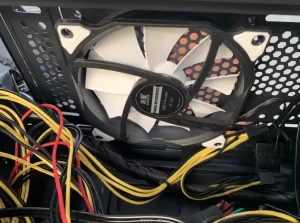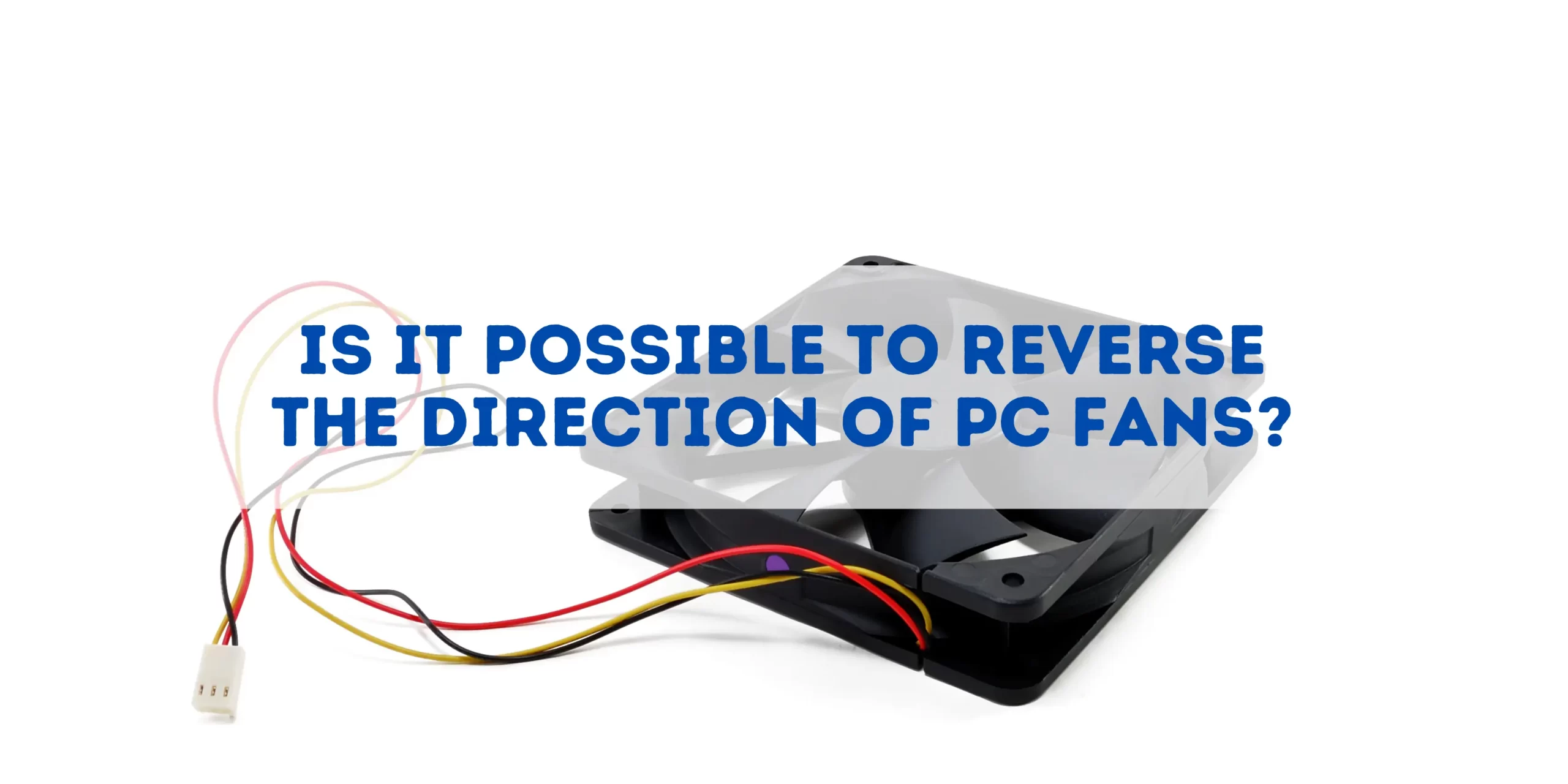Effective cooling is a crucial aspect of maintaining a computer’s performance and longevity. Central to this process is the role of airflow, managed by strategically placed fans within the computer’s case. These fans work tirelessly to dissipate heat, ensuring that components operate within safe temperature ranges. However, a question arises in the realm of PC cooling: Can PC fans be reversed, and why might one consider doing so? Reversing the direction of airflow in a computer can have significant implications on cooling efficiency and overall system health. This article delves into the feasibility and reasoning behind reversing PC fans, exploring whether this technique can be a viable solution for optimizing cooling in computer systems.
Table of Contents
ToggleUnderstanding PC Fan Mechanics
How PC Fans Work: Design and Function
The operation of PC fans is pivotal in maintaining an optimal thermal environment:
- Design Elements: PC fans consist of blades, a motor, and often a housing unit. The design is focused on maximizing airflow while minimizing noise.
- Functionality: Fans work by drawing cooler air into the computer case or expelling warm air out, creating a continuous flow that keeps components cool.
Airflow Direction in Standard PC Fan Setups
The direction of airflow plays a crucial role in effective cooling:
- Intake and Exhaust: Typically, fans at the front and bottom of the case serve as intake fans, pulling cool air in. Fans at the back and top usually act as exhaust fans, pushing hot air out.
- Direction Indicators: Most fans have indicators showing the direction of airflow, often marked by arrows on the housing.
You may also like: What is the Correct Fan Direction for Corsair PC Fans?
Reasons for Reversing Fan Direction

Exploring Scenarios Where Fan Reversal Can Be Beneficial
Reversing the direction of a PC fan can sometimes offer advantages in terms of cooling and airflow dynamics:
- Improving Airflow: In certain cases, reversing the fan direction can help balance the airflow within the case, especially if the existing setup leads to hot spots or inadequate cooling.
- Altering Cooling Dynamics: Depending on the layout of the PC components and the case design, reversing fan direction can enhance the effectiveness of cooling by directing air more efficiently over heat-generating parts.
Understanding when and why to reverse the direction of PC fans is crucial in optimizing the thermal management of your system. It’s not a one-size-fits-all solution, but in specific scenarios, it can make a significant difference in maintaining the ideal operating temperature for your computer.
You may also like: Is Heat Sink Better than Fan for Cooling?
Possibility and Methods of Reversing Fans
Can PC Fans Be Reversed Technically?
The feasibility of reversing the direction of PC fans is a topic of interest:
- Design Considerations: Most PC fans are designed to operate in one direction. However, technically, reversing the polarity of the fan’s power connection can change the rotation direction.
- Manufacturer Guidelines: It’s important to check the manufacturer’s specifications and guidelines, as not all fans are designed to be reversible and doing so might damage the fan or void the warranty.
Step-by-Step Guide to Safely Reverse Fan Direction
If fan reversal is possible and safe according to the manufacturer, here’s how to proceed:
- Power Off the Computer: Ensure the computer is completely powered off and unplugged from the power source.
- Access the Fan: Open the computer case to access the fan that needs to be reversed.
- Reverse Polarity (If Applicable): For fans that can have their rotation reversed, carefully switch the polarity of the power connection. This usually involves flipping the connector or rewiring for fans that support this feature.
- Test the Fan: After reversing, power on the computer to test the fan. Ensure it’s functioning correctly and the airflow direction has changed.
- Monitor Temperatures: Closely monitor the system’s temperatures to ensure the reversal has had the desired effect on cooling.
Considerations and Cautions
Important Factors to Consider Before Reversing a Fan
Before deciding to reverse a PC fan, it’s crucial to consider several factors:
- Warranty Implications: Reversing a fan might void the manufacturer’s warranty. Always check the warranty terms before proceeding.
- Potential Risks: Consider the risk of damaging the fan or other components, especially if the fan is not designed to be reversible.
- Impact on Cooling Efficiency: Assess how reversing the fan might affect the overall cooling performance of your system.
Assessing Suitability for Your PC Setup
Determining whether fan reversal is appropriate for your setup involves careful evaluation:
- Analyze Airflow Patterns: Understand the current airflow pattern in your PC and identify any areas that need improvement.
- Consult Technical Documentation: Refer to your PC and fan manuals for guidance on airflow, cooling requirements, and fan capabilities.
- Seek Expert Advice: If unsure, consider consulting with a PC hardware expert or technician who can provide tailored advice for your system.
- Trial and Error: Sometimes the best way to see if fan reversal works for you is through careful testing and monitoring.
Alternative Cooling Solutions
Enhancing Computer Cooling Without Reversing Fans
If reversing fan direction is not feasible or desirable, there are other effective ways to improve your computer’s cooling:
- Adjust Fan Speeds: Utilize software or BIOS settings to adjust the speeds of your fans. Faster speeds can increase airflow and cooling but may also increase noise.
- Optimize Case Airflow: Rearrange internal components or change the placement of fans to create a more efficient airflow path through the case.
- Improve Cable Management: Properly managing cables within the computer case can significantly improve airflow, reducing hotspots.
- Add Additional Fans: If your case allows, adding more fans can increase the overall airflow, helping to keep temperatures down.
- Consider Aftermarket Cooling Solutions: Upgrading to higher-quality fans or installing an aftermarket CPU cooler can provide more efficient cooling.
- Use Cooling Pads for Laptops: For laptop users, cooling pads can help improve air circulation and reduce overheating.
Conclusion
In conclusion, while the concept of reversing PC fan direction might seem like a straightforward solution to cooling challenges, it is evident that it requires careful consideration and understanding of the potential impacts. As we have explored, this approach is not universally applicable and may not always result in the desired improvements in cooling efficiency. Instead, it is essential to evaluate the specific needs and design of your computer system, considering alternative methods such as optimizing fan placement, improving internal airflow, and utilizing better cooling technologies.
Ultimately, maintaining optimal cooling is crucial for the longevity and performance of your PC. Whether it’s through reversing fan direction, enhancing existing cooling systems, or employing new strategies, the goal remains the same: to ensure efficient and effective thermal management for your computer.

